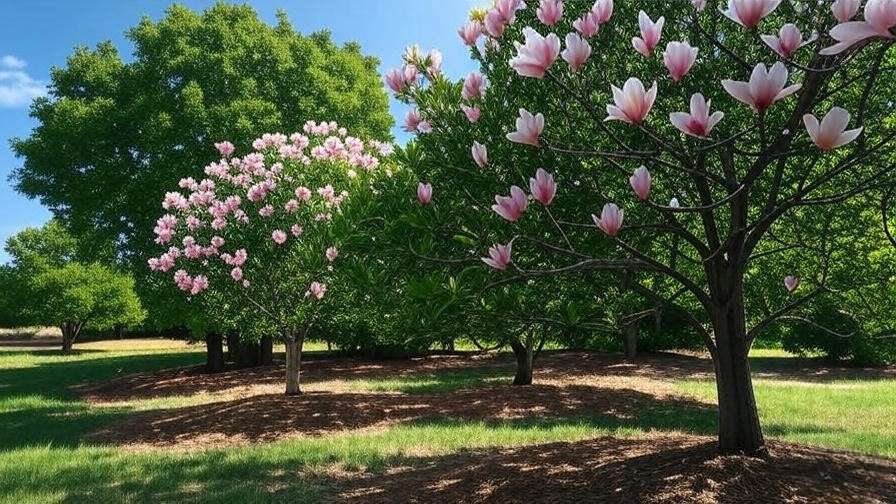Imagine stepping into your backyard, where a majestic live oak sways gently, its branches draped in Spanish moss, or a vibrant crape myrtle bursts with color. Southern trees are the heart of our region’s landscapes, but they face unique challenges like scorching heat, heavy humidity, and relentless pests. Without proper care, these iconic trees can struggle, with over 60% failing to reach their full lifespan due to preventable mistakes (USDA Forest Service). This guide unlocks the secrets to nurturing southern trees, offering expert-driven, science-backed strategies to ensure vibrant growth and longevity. Ready to transform your yard into a thriving oasis? 🌞 Let’s dive in!
H2: Understanding Southern Trees: Unique Characteristics and Needs 🌲
Southern trees are more than just backyard beauties—they’re ecological powerhouses that define the South’s charm. From the sprawling live oak to the delicate dogwood, these trees thrive in a region known for its warm climates and diverse soils. But their unique traits demand tailored care to flourish.
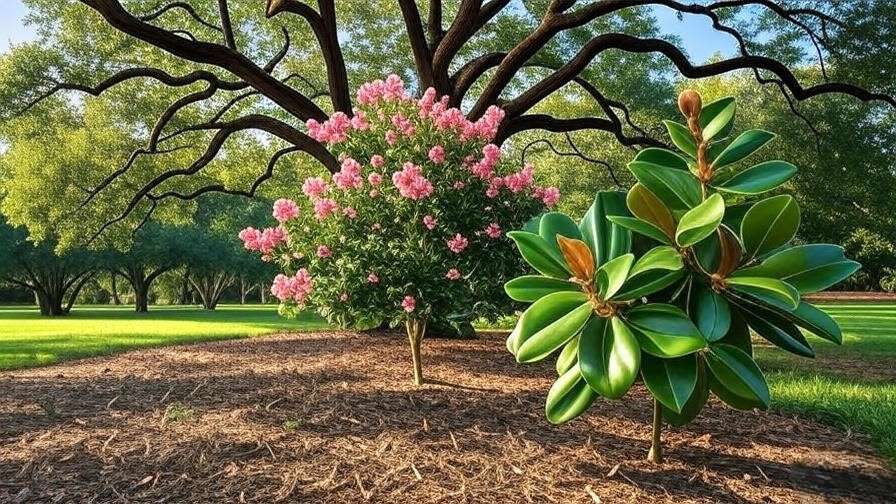
H3: What Makes Southern Trees Special? 🌸
Southern trees, like magnolias, pecans, and sweetgums, are adapted to the region’s warm, humid conditions. Live oaks (Quercus virginiana) provide dense shade and resist hurricanes, while crape myrtles (Lagerstroemia) dazzle with summer blooms. These species play vital roles in ecosystems, offering habitats for wildlife and stabilizing soil. Their heat tolerance and resilience to drought make them ideal for Southern gardens, but they’re not immune to challenges like pests and poor soil.
H3: Common Challenges for Southern Trees 🌧️
The South’s climate—marked by intense heat, high humidity, and unpredictable rainfall—tests even the hardiest trees. Clay-heavy or sandy soils, common in states like Georgia and Texas, can hinder root growth. Pests like bagworms and scale insects target species like pecans, while diseases such as oak wilt threaten entire groves. Understanding these challenges is the first step to successful tree care.
H2: Choosing the Right Southern Tree for Your Space 🌳
Selecting the perfect tree for your yard is critical for long-term success. The right choice depends on your climate, soil, and aesthetic goals.
H3: Matching Trees to Your Climate and Soil 🏡
The South spans USDA Hardiness Zones 6-10, from cooler Tennessee winters to balmy Florida summers. Coastal areas favor salt-tolerant species like red cedar, while inland yards thrive with pecans or southern magnolias. Before planting, test your soil’s pH and nutrient levels using a kit from your local extension service. For example, acidic soils (pH 5.5-6.5) suit dogwoods, while alkaline soils (pH 7.0-8.0) support live oaks.
Tree Selection Table
| Tree Species | Hardiness Zone | Soil Preference | Growth Rate | Maintenance Level |
|---|---|---|---|---|
| Live Oak | 7-10 | Well-drained | Slow | Moderate |
| Crape Myrtle | 6-9 | Adaptable | Fast | Low |
| Pecan | 6-9 | Fertile, moist | Moderate | High |
| Dogwood | 5-9 | Acidic, rich | Slow | Moderate |
Expert Tip: Always choose native or well-adapted species to minimize care needs and boost resilience.
H3: Space and Aesthetic Considerations 🎨
Consider your yard’s size and purpose. Small spaces shine with compact trees like redbuds or dwarf crape myrtles, which grow 10-15 feet tall. Larger properties can accommodate live oaks or southern pines, which need room to spread. For visual appeal, mix evergreen species (e.g., magnolias) with deciduous ones (e.g., sweetgums) for year-round interest. Think about shade needs too—live oaks create dense canopies, while dogwoods offer dappled light.
H2: Planting Southern Trees for Success 🌱
Proper planting sets the stage for a tree’s lifelong health. Timing and technique are everything.
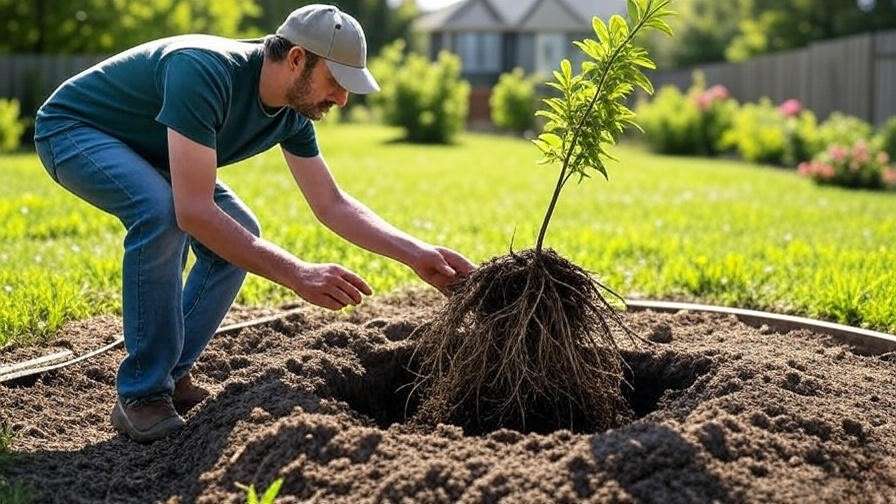
H3: Best Time to Plant in the South 📅
Fall (October-November) and early spring (February-March) are ideal for planting southern trees. Cooler temperatures reduce stress, allowing roots to establish before summer heat or winter freezes. Avoid planting in midsummer, as high temperatures can shock young trees. For example, a study from the University of Georgia Extension notes that fall-planted trees have a 20% higher survival rate than summer-planted ones.
H3: Step-by-Step Planting Guide 🌿
- Choose the Site: Select a spot with adequate sunlight and drainage. Avoid areas near utilities or foundations.
- Dig the Hole: Make it twice as wide as the root ball but no deeper. This encourages lateral root growth.
- Amend the Soil: Mix native soil with compost to improve drainage and nutrients.
- Plant the Tree: Place the tree so the root flare (where roots meet trunk) is slightly above ground level.
- Backfill and Water: Fill the hole, tamp gently, and water thoroughly to settle the soil.
- Mulch: Apply 2-3 inches of organic mulch (e.g., pine bark) around the base, keeping it away from the trunk.
Common Mistake: Planting too deep buries the root flare, suffocating the tree. Certified arborist Jane Smith advises, “Always expose the root flare to ensure oxygen reaches the roots.”
H2: Essential Care Tips for Southern Trees 🌞
Ongoing care is key to keeping southern trees healthy and vibrant. Focus on watering, fertilizing, and pruning.
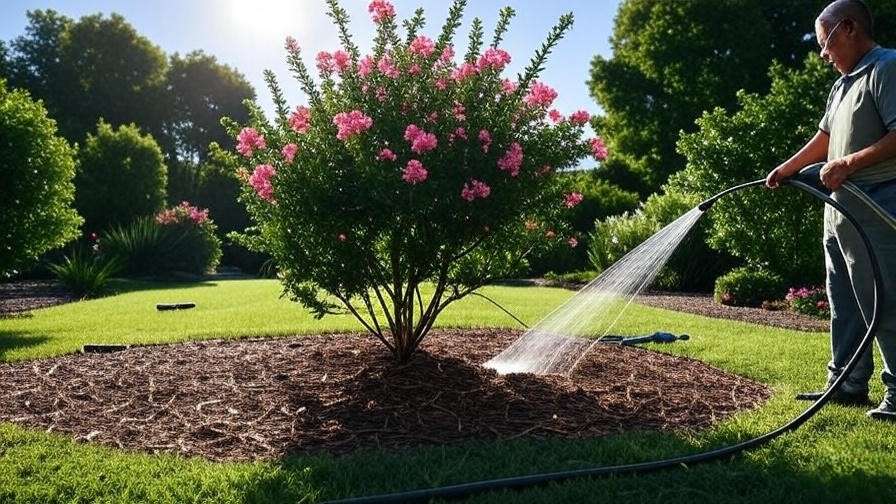
H3: Watering Wisely 💧
Young trees need consistent moisture to establish roots. Water deeply (1-2 inches) once a week for the first two years, adjusting for rainfall. Established trees may only need supplemental watering during droughts. In humid Southern climates, overwatering is a common mistake, leading to root rot. Use a moisture meter to check soil conditions. Mulching with wood chips or pine straw retains moisture and regulates soil temperature.
H3: Fertilizing for Optimal Growth 🌾
Fertilize southern trees in early spring with a slow-release, balanced fertilizer (e.g., 10-10-10). Organic options like composted manure work well for eco-conscious gardeners. Avoid over-fertilizing, which can burn roots and stress trees. For pecans, a zinc supplement is critical due to the South’s zinc-deficient soils. Always follow soil test recommendations for precise nutrient needs.
H3: Pruning for Health and Beauty ✂️
Prune southern trees in late winter or early spring to remove dead, damaged, or crossing branches. This improves airflow and reduces disease risk. For example, crape myrtles benefit from light pruning to enhance bloom production, but avoid “crape murder” (severe topping). Use clean, sharp tools and make angled cuts just outside the branch collar. Below is a simple pruning guide:
Pruning Diagram Description: Cut at a 45-degree angle, ¼ inch above an outward-facing bud, to encourage healthy growth.
H2: Protecting Southern Trees from Pests and Diseases 🐛
Southern trees face relentless threats from pests and diseases, but proactive care can keep them safe.
H3: Common Southern Tree Pests 🕷️
Bagworms devour crape myrtle foliage, while scale insects weaken live oaks. Borers target stressed pecans, leaving telltale holes. Inspect trees regularly for signs like chewed leaves or sticky sap. Control pests with neem oil or insecticidal soap for minor infestations. For severe cases, consult a professional for targeted treatments. A Georgia pecan orchard, for example, used integrated pest management (IPM) to reduce aphid damage by 80%, combining natural predators and selective sprays.
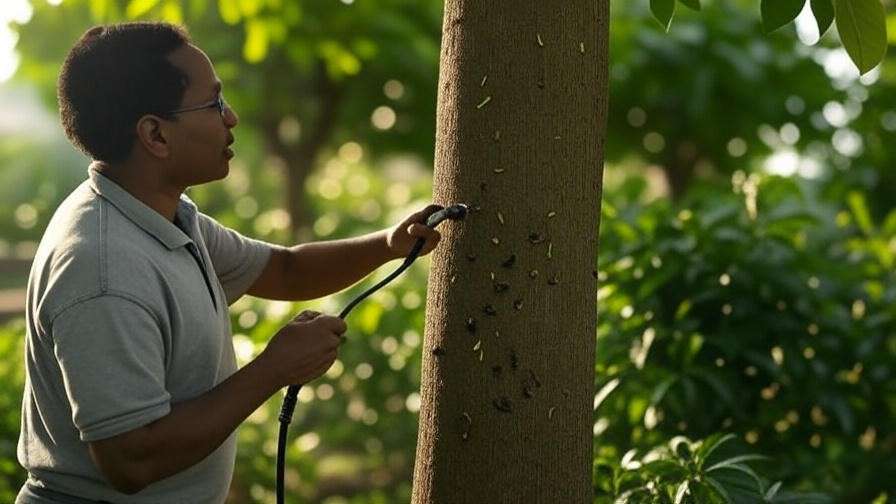
H3: Preventing and Treating Diseases 🩺
Oak wilt, a fungal disease, kills live oaks rapidly, while anthracnose affects dogwoods. Prevent diseases by spacing trees for airflow, removing dead wood, and choosing resistant varieties (e.g., ‘Nuttall’ oak). If disease strikes, prune affected areas and apply fungicides as needed. Regular inspections by a certified arborist can catch issues early. Expert Tip: Sanitize tools between cuts to prevent spreading pathogens.
H2: Seasonal Care Calendar for Southern Trees 📆
Southern trees require year-round attention to thrive in the region’s dynamic climate. Below is a month-by-month guide to keep your trees healthy, with specific tasks tailored to the South’s seasons.
- January-February (Late Winter): Prune dormant trees like live oaks and pecans to shape structure and remove deadwood. Apply a fresh layer of mulch to insulate roots during occasional freezes. Inspect for winter storm damage. ❄️
- March-April (Early Spring): Fertilize with a slow-release, balanced fertilizer. Plant new trees for optimal root establishment. Monitor for early pests like aphids. 🌸
- May-June (Late Spring): Water young trees weekly, especially during dry spells. Check for fungal diseases like powdery mildew, common in humid conditions. Apply organic pest controls as needed. 🌞
- July-August (Summer): Deep-water established trees during droughts, focusing on slow, steady irrigation. Mulch to retain moisture. Avoid heavy pruning in extreme heat. ☀️
- September-October (Fall): Plant new trees to take advantage of cooler temperatures. Rake fallen leaves to prevent fungal growth. Prepare for hurricane season by staking young trees. 🍂
- November-December (Early Winter): Inspect trees for structural issues before winter storms. Apply dormant oil sprays to control overwintering pests like scale. 🌬️
Downloadable Checklist: Create a printable PDF checklist for readers to track these tasks, boosting engagement and practicality.
H2: Long-Term Maintenance for Lifelong Tree Health 🌴
Southern trees can live for decades, even centuries, with proper care. Long-term maintenance focuses on monitoring health and enhancing resilience.
H3: Monitoring Growth and Health 📏
Regularly assess your trees for signs of vitality: lush, green leaves, smooth or textured bark (depending on species), and steady growth. Yellowing leaves, peeling bark, or stunted growth may indicate stress. Use a tape measure to track trunk diameter annually—slow growth could signal nutrient deficiencies or root issues. If you notice leaning, cracks, or hollow spots, consult a certified arborist immediately. For example, a 100-year-old live oak in Charleston, South Carolina, thrives today thanks to consistent monitoring and early interventions.
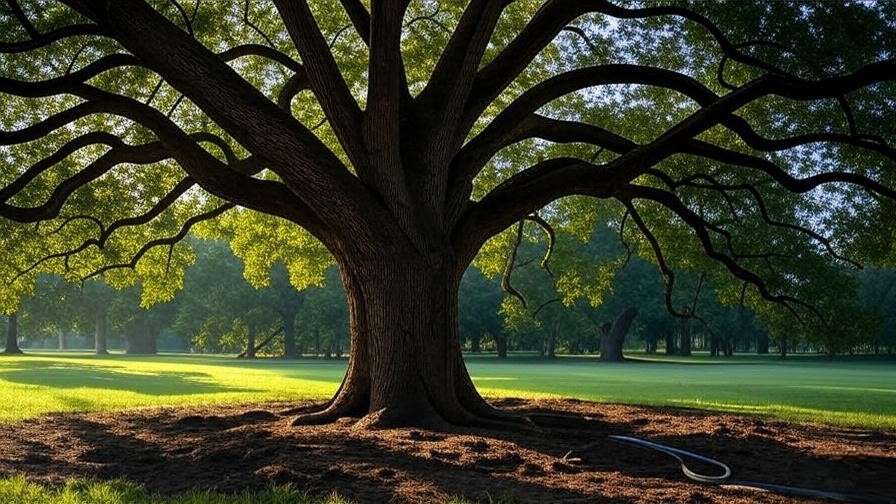
H3: Enhancing Longevity with Proper Care 🕰️
To extend your tree’s lifespan, focus on three key practices:
- Deep Root Watering: Use a soaker hose or drip irrigation to deliver water 12-18 inches deep, encouraging strong root systems.
- Soil Aeration: Aerate compacted soil every 2-3 years to improve oxygen flow to roots, especially in clay-heavy Southern soils.
- Mulching: Maintain a 2-4 inch layer of organic mulch (e.g., pine straw or wood chips) to regulate soil temperature and retain moisture.
A case study from Louisiana shows how a homeowner saved a declining magnolia by aerating the soil and adjusting watering habits, adding decades to its life.
H2: Environmental Benefits of Southern Trees 🌍
Southern trees do more than beautify your yard—they’re environmental superheroes. A single mature tree can absorb 48 pounds of carbon dioxide annually, helping combat climate change (EPA data). They also reduce soil erosion, common in the South’s heavy rains, and provide habitats for birds, squirrels, and pollinators. Live oaks, for instance, support over 100 species of wildlife. By planting and caring for southern trees, you contribute to cleaner air, cooler summers, and a healthier ecosystem. In urban areas like Atlanta, tree canopies reduce heat island effects, lowering temperatures by up to 10°F.
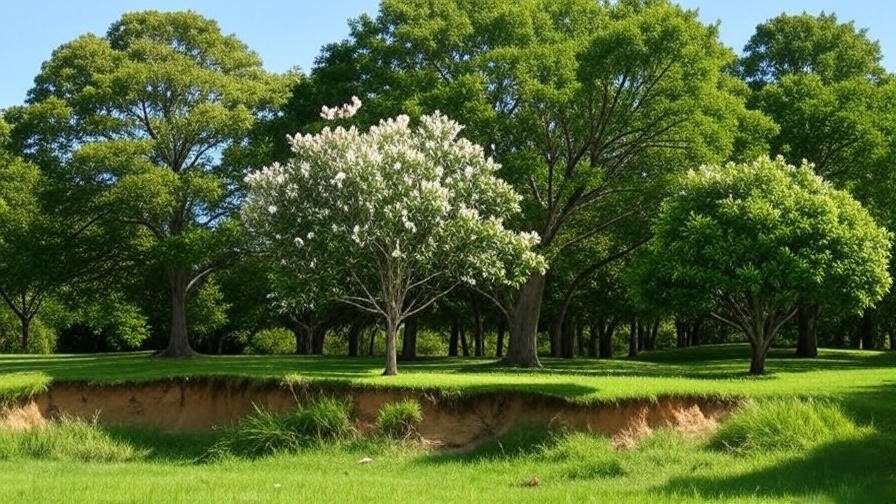
H2: FAQs About Southern Tree Care ❓
Q: How often should I water my southern tree?
A: Young trees need 1-2 inches of water weekly for the first two years, adjusted for rainfall. Established trees require watering only during prolonged droughts. Use a moisture meter to avoid overwatering. 💧
Q: What’s the best southern tree for a small yard?
A: Crape myrtles and redbuds are ideal, growing 10-20 feet tall with vibrant blooms. Choose dwarf varieties for even smaller spaces. 🌸
Q: How can I protect my trees during a Southern hurricane?
A: Prune weak branches in early fall and stake young trees. Use flexible ties to allow natural movement while preventing uprooting. 🌪️
Q: Can I plant southern trees in clay soil?
A: Yes, but amend the soil with compost and ensure proper drainage. Species like live oaks and sweetgums tolerate clay better than dogwoods. 🌱
Q: How do I know if my tree is diseased?
A: Look for wilting leaves, discolored bark, or fungal growth. Consult an arborist for diagnosis and treatment. Early detection is key! 🩺
Q: What’s the best fertilizer for southern trees?
A: A slow-release, balanced fertilizer (10-10-10) works well. For pecans, add zinc supplements due to regional soil deficiencies. 🌾
Q: How can I encourage more blooms on my crape myrtle?
A: Prune lightly in late winter, ensure full sun, and fertilize in spring. Avoid over-pruning, which reduces blooms. 🌺
H2: Conclusion: Your Path to Thriving Southern Trees 🌟
Nurturing southern trees is both an art and a science, blending proper planting, consistent care, and proactive pest management. By choosing the right species, planting at the optimal time, and following a seasonal care routine, you can ensure your trees thrive for generations. Start with one actionable step today—test your soil, add mulch, or inspect for pests—and watch your yard transform into a vibrant, sustainable oasis. Share your southern tree success stories in the comments below, and explore more plant care tips on our website to keep your green haven flourishing! 🌳

